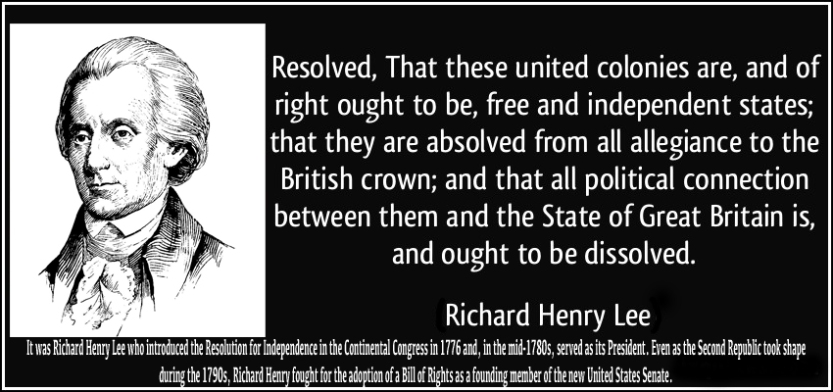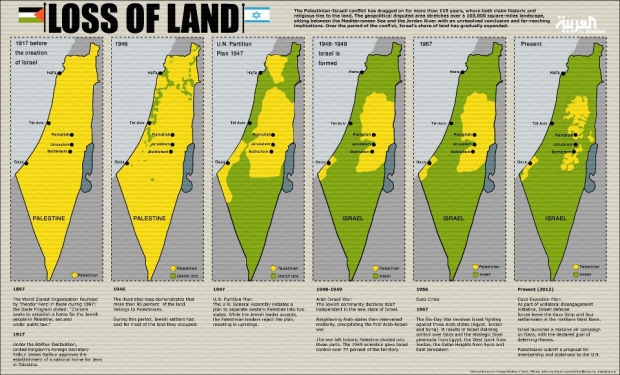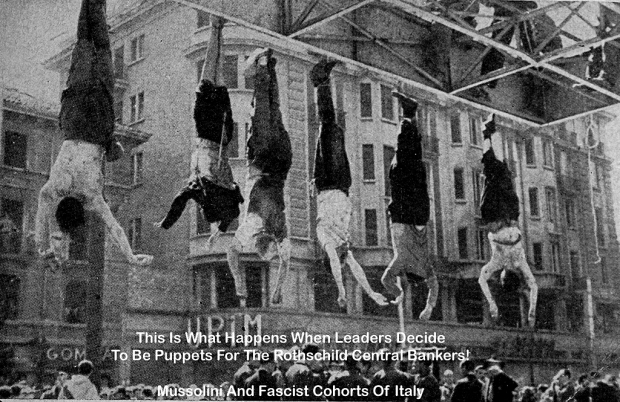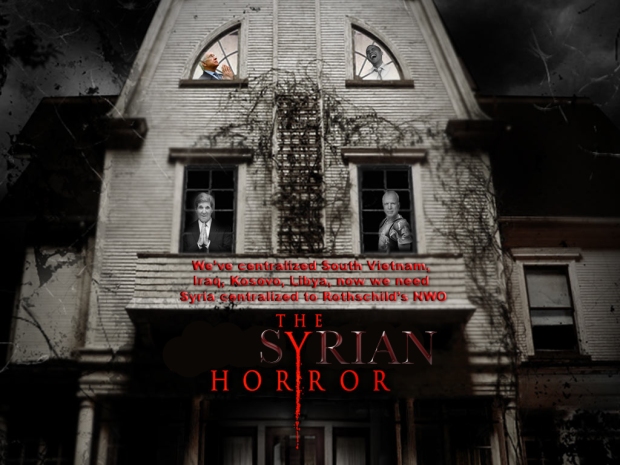Origins, History and Geography of Dollar Currencies
From Thalers to Dollars
The history of the dollar is a story involving many countries in different continents. The word dollar is much older than the American unit of currency. It is an Anglicised form of “thaler”, (pronounced taler, with a long “a”), the name given to coins first minted in 1519 from locally mined silver in Joachimsthal in Bohemia. (Today the town of Joachimsthal lies within the borders of the Czech republic and its Czech name is Jáchymov). Thaler is a shortened form of the term by which the coin was originally known – Joachimsthaler.
Later on the English version of the name (dollar) was also applied to similar coins, not only ones minted in central Europe but also the Spanish peso and the Portuguese eight-real piece. Both these large silver coins were practically identical in weight and fineness. Today we are familiar with the phrase pieces of eight from tales of pirates in the Caribbean.
Those coins, particularly the Spanish peso or dollar circulated widely in Britain’s North American colonies because of a shortage of official British coins. That is why, after the United States gained its independence the new nation chose “dollar” as the name of its currency instead of keeping the pound.
Later Thalers
Probably the most famous thaler coins were those minted during the reign of Maria Theresa, Archduchess of Austria and queen of Hungary and Bohemia (1740-80). Maria Theresa thalers were in common use in Aden and some other parts of the Middle East as recently as the 1960s.
The thaler was the unit of currency in Prussia and some of the other German states until the second half of the 19th century. The unification of Germany in 1871 and the adoption of the mark as the common currency put an end to the old units, just as the adoption of the Euro and the introduction of new notes and coins in 2002 put an end to the French franc, the German Deutschemark, Italian lire, Spanish peseta, and other European currencies. |
|

A History of moneyfrom ancient times to the present day, byGlyn Davies, 3rd ed, University of Wales Press, 2002. 720p.
Much of the information in this page comes from the above-mentioned book.
See the website for additional information about the history of money.
Other printed sources were used, particularly in connection with dollar sign, and are mentioned below. There are also links to the most important web sources used.
|
The Scandinavia Daler
While on the subject of currency unions, before the formation of the Scandinavian Currency Union in 1873 and the adoption of the krone or krona, (the first being the Danish and Norwegian word for “Crown” and the second, the Swedish word) each of the Scandinavian countries had their own version of the “daler” as their currency. Like “dollar” the name “daler” came from “thaler” and provides a clue as to how the word evolved. (The term “daler” was also used in Low German and Dutch). In Sweden dalers were minted from 1534 onwards, and in Denmark from 1544. As Denmark and Norway formed a united kingdom until the Napoleonic Wars, when Norway passed into Swedish rule, the two countries shared a common currency.
The Scandinavian Currency Union was modelled on the much larger Latin Currency Union which was inspired by France. World War I effectively put an end to the Latin Currency Union. Although Denmark, Norway and Sweden were neutral, World War I put a considerable strain on their economies too, and consequently the Scandinavian Currency Union was officially dissolved not long after, in 1924.
Dollars in Shakespeare
Interesting examples of the use of the word “dollar” in Britain long before the creation of the United States – in fact the English colonisation of North America had scarcely begun – can be found in two of Shakespeare’s plays.
Macbeth Act I, Scene 2
Rosse:
“That now
Sweno, the Norway’s King, craves composition;
Nor would we deign him burial of his men
Till he disbursed at Saint Colme’s Inch
Ten thousand dollars to our general use.”
The Tempest, Act II, Scene 1
Gonzalo:
“When every grief is entertain’d that’s offer’d, Comes to th’ entertainer –
Sebastian:
“A dollar.”
Gonzalo:
“Dolour comes to him, indeed: you have spoken truer than you purpos’d.”
The last remark by Gonzalo was, of course, a pun since “dolour” is an old-fashioned word for pain or grief, like the modern Spanish word dolor, which also means pain.
Shakespeare’s use of the word “dollar” in Macbeth was anachronistic since the real Macbeth probably died in the middle of the 11th century, nearly 500 years before the first thalers were minted. Nevertheless the use of the word in Macbeth and the Tempest, both of which were first performed in about 1611, is a clear indication that the term dollar was already in use in English before the the Pilgrim Fathers set sail for America in 1620.
The Aztecs, Incas and the Spanish Empire
The reasons for the adoption of the dollar as the official currency of the US are bound up with events in Mexico, Peru and Bolivia. Small bands of Spanish adventurers had overthrown the empires of the Aztecs and Incas, plundering their temples and razing them to the ground or converting them to cathedrals – Machu Picchu was the outstanding exception, not being “discovered” until the 20th century.
In addition to the treasures they melted down, the Spanish conquerors soon began to produce large quantities of silver from mines in Mexico and Peru. Most important of all were the enormous reserves they discovered at Potosi in what is now Bolivia. Ships laden with silver regularly crossed the Atlantic and Pacific Oceans. Those crossing the Atlantic were naturally bound for Spain. Others sailed west across the Pacific to China to trade silver for Chinese goods. As the Spaniards controlled the sources of most of the world’s silver their coins were widely accepted, especially in places like Britain’s American colonies where silver was in short supply.
The United States Dollar
During colonial times the official British coinage was in short supply and as a result the a variety of substitutes was used inBritain’s American colonies, including wampum, in some of the northern colonies, and tobacco, or more conveniently, certificates for tobacco deposited in public warehouses, in Virginia. The colonists also used whatever foreign coins they could obtain. At various times in different colonies paper money was issued and disputes with the British government over this were one of the causes of the American Revolution. The rebels financed their war of independence largely by printing paper money notes that were called Continentals. By the end of the war, these had been rendered practically worthless by hyperinflation but financial prudence is a luxury in wartime. The notes had served their purpose and, with the help of their French allies, the Americans won the war.
As Spanish pesos or dollars had long been in wide circulation in North America, some of the paper money issued in some of the colonies before the war had been denominated in dollars. Other notes used British monetary units. During the war too, some Continentals were denominated in British units, others in dollars. In 1792 the newly independent United States chose the dollar, subdivided into 100 cents, as the unit of American currency in preference to the British pound.
Foreign coins were supposed to lose their status as legal tender within 3 years of the US coins coming into circulation. A new mint was established in Philadelphia and started its operations in 1794. The mint was the first purpose-built structure authorized by the United States government. However, because of a shortage of both gold and silver, in 1797 the government extended legal tender status to Spanish dollars for an indefinite period. The discoveries in California, which sparked off the Gold Rush in 1848, led to a massive increase in the production of gold coins by the mint, and in 1857 the United States finally removed legal tender status from all foreign coins. By then, although as necessary to the retail trade as ever, developments in banking meant that coins were just the small change of commerce.
British Dollars
In 1797, owing to a desperate shortage of silver coins, the Bank of England issues altered foreign coins from its reserves. Half a million pounds worth of Spanish dollars issued by King Charles IV were over-stamped with a small engraving of George III. The re-issued coins, with a value of 4 shillings and 9 pence, attracted ridicule. “Two Kings’ heads and not worth a crown” was one witticism. (A ‘crown’ in this context meant 5 shillings, “half-a-crown”, sometimes colloquially known as “half-a-dollar”, being a common coin before decimalisation in 1971). A cruder, description was “the head of a fool stamped on the neck of an ass”. The issue failed because over-stamping was also applied unofficially to the plentiful supplies of light or base Spanish dollars.
A few years later a more successful issue of dollars was made by the Bank of England. In 1804 Matthew Boulton, the business partner of the steam engine pioneer James Watt, was employed to erase completely the existing design on full-weight Spanish coins and stamp them as Bank of England Five Shilling Dollars.
Dollars in the British Empire and Commonwealth
Canada
A great deal of the trade of Canada was with the United States and as a result pressure grew for a switch of currency from the pound sterling to a decimal system similar to the American one. The British government agreed and the Province of Canada gradually changed over to the dollar between 1853 and 1857. Canadian dollars and cents were minted in Britain until the establishment of the Ottawa Mint in 1908.
Australia, New Zealand and the Pacific Islands
In contrast to Canada Australia kept the sterling system for well over half a century after being gaining independence from Britain. Because of the cumbersome nature of the division of the pound into 20 shillings and the shilling into 12 pence there had been many proposals in Britain over the years for the adoption of a decimal system. In Queen Victoria’s time the two shilling coin or florin was introduced as a step in that direction. However it was not until 1971 that Britain finally adopted the decimal system and divided the pound into 100 new pennies. The Australians decimalised their currency five years earlier but, in contrast to Britain, decided to abolish the pound and adopt the dollar. Two new Australian dollars were worth one old Australian pound, i.e. the Australian dollar was the equivalent of ten shillings.
New Zealand followed Australia’s lead and replaced their own pound with the New Zealand dollar in 1967. Fiji and the Solomon Islands both adopted the dollar as their national currencies. Some of the smaller island states such as Kiribati, Tuvalu and Nauru continue to use the Australian Dollar.
Africa
One of the very few former colonies in Africa to use the dollar is Zimbabwe. Some years after unilaterally declaring independence from Britain, Rhodesia replaced the Rodesian pound by the Rhodesian dollar. After majority rule was introduced the country changed its name to Zimbabwe and changed the name of its currency accordingly. South Africa still uses the rand. Most other former British colonies have adopted African names for their currencies. Kenya and Uganda use the shilling.
The Caribbean
In 1935 the British government introduced a new currency, the British West Indies Dollar, in many of the British colonies in the Caribbean. Previously, in some of those colonies the US dollar had circulated in addition to the pound sterling. Later, after gaining independence, the former colonies adopted their own versions of the dollar as their national currency. Of the remaining British colonies in the Caribbean, the Turks and Caicos Islands and the British Virgin Islands use the US dollar as their currency but the Cayman Islands have chosen to issue their own dollar.
The Far East
In the British colonies of Malaya and Singapore the official currency was the Indian rupee but the general public kept their accounts and made most of their payments, including taxes, in dollars and cents. Therefore in 1867 the public’s preferences were recognised when legal tender status is given to various foreign coins such as dollars from Hong Kong, Mexico, Bolivia and Peru. Subsequently, in 1874, the British authorities in Singapore also made the Japanese yen and US dollar legal tender.
Competition was provided for these foreign coins twenty years later in 1894 when British dollars were first minted for the colonies in the Far East. Most of these “British” dollars were actually minted in Bombay in India. A much bigger step towards the replacement of the foreign dollars was taken in 1902 when the Straits Settlement (Singapore) dollar was introduced, and two years later legal tender status was withdrawn from the foreign coins.
Of course a currency does not have to be official for it to be acceptable to traders. In his reminiscences about World War II an American sailor described how a shipmate once bought a basket containing a live cobra at Candy on the island of Ceylon (modern Sri Lanka), then still a British colony, because he laughingly offered two “dollars Mex” (i.e. two Mexican dollars) to the young street peddler. See playing the game for his account of the incident.
Foreign Dollars in China
The Chinese had used base metals for their coins ever since they invented them, independently of but probably slightly later than the Lydians and Greeks. For large transactions base metal coins were not very convenient and silver, in weighed quantities, was used. Another alternative was paper money, which the Chinese invented centuries before it became common in Europe but abandoned after about 1455.
Not long after that, Spanish galleons laden with silver began to sail regularly from Acapulco in Mexico to Manila in the Philippines where the silver was used to buy Chinese goods such as porcelain and silk. Supplies of silver from the Americas started to dry up towards the end of the Ming dynasty and were probably a significant factor in the economic crisis China experienced at that time. Subsequently supplies picked up again as new mines were developed. After the Opium War China was forced by Britain and other countries, including France, Germany, America and Japan to open up major harbours as treaty ports and to cede land to those countries as foreign concessions. As a result a large variety of foreign silver coins, particularly Mexican dollars, circulated widely in China.
Prior to 1890 the Chinese had rarely minted precious metal coins but in that year they started to produce their own silver coins. In the early decades of the 20th century output of silver coins from Chinese mints increased but political stability prevented the complete replacement of foreign coins.
The fate of Gareth Jones, the Welsh journalist, illustrates how Mexican dollars continued to be important in China even in the 1930s. Jones had been the first person to report the terrible Soviet famine in 1933, caused by Stalin’s policies. A couple of years later, in the spring of 1935, Jones travelled to Manchuria, or Manchukuo as the Japanese called the conquered province, but was captured by bandits and held for a ransom of 100,000 Mexican dollars. After 16 days in captivity he was murdered. The bandits had been coerced by the Japanese military which was holding their families hostage as it did not want Jones to expose the army’s actions in Manchuria.
The successful Communist Revolution finally brought an end to the chaos of currencies that had long afflicted China.
The Dollar Sign $ – Theories of its Origins
Since the symbol is more recent than the name, and the origins of the latter are well understood, one might expect that the origins of the sign would also be known for certain particularly when the origin of the British pound sign, £, which is far older, is well-established. However that is not the case with regard to the dollar.
Perhaps this is less surprising when there has been controversy over the origin of the sign for the European euro, €, a currency that did not come into existence until 1999. (It has been claimed that the euro sign was invented by Arthur Eisenmenger more than a quarter of a century before the currency was introduced). Nevertheless a number of theories about the origin of the dollar symbol have been proposed.
The United States Abbreviation Theory
One of the most popular theories is that the dollar sign is derived from the initials of the United States. If you superimpose a capital “U” on a capital “S” then drop the lower part of the “U”, what you end up with is a version of the dollar symbol with two strokes. This theory was endorsed by the American libertarian philosopher and staunch defender of capitalism, Ayn Rand, in her novel Atlas Shrugged. Chapter 10 is entitled the Sign of the Dollar. Rand claimed the dollar sign was the symbol not only of the currency, but also the nation, a free economy, and a free mind.
The Peso Abbreviation and Piece of Eight Theories
However, a more widely accepted theory nowadays is that the sign owes its origins to the Spanish peso.
One version of this theory is that the standard abbreviation of “peso” was simply “P”, but the plural form was a large “P” with a small “s” above it and to its right. This was simplified by retaining only the upward stroke of the “P” and superimposing the “S” upon it. Hence the symbol of the dollar.
See:
Dreyfuss, Henry Symbol source book : an authoritative guide to international graphic symbols. New York : McGraw-Hill, 1972.
If the peso abbreviation theory is the correct one why is the US dollar sign sometimes written with two vertical strokes? A possible explanation is that the best known Spanish Peso coin had two pillars engraved on the reverse side to symbolise the “Pillars of Hercules” at Gibraltar and the words “Plus Ultra” indicating that beyond the Pillars of Hercules there were other lands. That coin was called the Pillar Dollar in the British colonies in North America and the two pillars may have become the two strokes in the Dollar sign.
For brief information on the “Pillar Dollar” see:
Nussbaum, Arthur A history of the dollar. New York : Columbia U.P., 1957.
There is another version of the theory linking the sign to the Spanish peso. As mentioned earlier the peso was subdivided into eight reals, hence the name piece of eight. This was represented as P8 or /8/. Eventually it became customary to write the oblique strokes across the figure 8. In the past precious metal coins were sometimes split into pieces to provide small change. The use in America of the expression two bits for 25 cents is a legacy of this since if a Spanish dollar or peso or piece of eight was split into quarters each part would consist of two of the original eight pieces or reals.
The 8 with two strokes became a letter S with two strokes since S looks like an 8 that has been split, as when a peso was broken to provide change in reals. Eventually a further simplification was introduced by dropping one of the strokes.
The Potosi Mint Mark Theory
Adherents of this theory also believe that the source of the dollar sign is to be found in the Spanish peso but they would attribute it specifically to coins minted in Potosi which was, as mentioned above, the world’s richest source of silver. The mint mark of the Potosi mint evolved to become a monogrammed PTSI with all those letters completely superimposed so that the symbol looked like an S wrapped around a T. The resemblance to the dollar sign can be seen from the images of the Potosi Pillar Dollars. Click on the image for a larger picture. The mint mark is near the date.
The Shilling Abbreviation Theory
There is a view, held by some typographers, that the dollar symbol derives from the abbreviation for the shilling, s, which was used in Britain, both as a coin and as a monetary unit, until decimalisation in 1971. A stroke through a letter was sometimes used to indicate that the letter was an abbreviation. The classic example of this is the British pound symbol £ which is a cursive capital L with a stroke through it. The pound symbol is derived from the Latin word for a pound weight, libra, since a pound of silver was the standard on which the monetary unit was based. In the case of the shilling the stroke through the s would have had an added significance.
Until 1971 when Britain divided the pound into 100 (new) pennies and abandoned the old sub-units, two different methods of representing the shilling were used; one was simply the letter s and the other was the oblique slash / which is also known as asolidus, the name of the Roman coin from which the shilling is derived. Actually the slash or solidus was used to separate shillings from pence when sums of money were written down, e.g. 4/6 for four shillings and sixpence. (For an amount consisting of an integral number of shillings a dash indicated zero pence, e.g. 3/- for three shillings).
If you make the slash or solidus vertical and combine it with the S you end up with $ – the dollar sign.
It may seem strange that having thrown off British rule and rejected the British pound in favour of the Spanish dollar, the Americans should adopt a symbol based on the abbreviation for the British shilling but during colonial times they had used British units for financial calculations even when they used substitutes, such as the Spanish dollar, as currency. Even today Americans still often refer to cents as pennies.
Furthermore, shillings had been produced in the colonies without authorisation from the British authorities. In 1652 John Hall set up a private mint in Massachusetts and produced coins known as pine tree shillings because of the picture of a pine tree stamped on them. His mint was forced to close in 1684, but because of it the word shilling would still have carried patriotic connotations a century later.
The Portuguese Cifrão Theory
Even though Arabic numbers are used all over the world today, there are still differences in the way in which numbers are represented in different countries. In the English-speaking world a period is used to separate integral numbers from decimal fractions whereas in continental Europe the comma is used instead of the decimal point and either a period or a space is used for thousands and other groups of three digits. In the past the Spanish used a symbol called the calderon to separate the thousands, and the Portuguese used one called the cifrão. As the cifrão was also used to separate numeral expressions of different denominations and it consisted of the letter s with two vertical lines it has been suggested that it gave rise to the dollar symbol. (Über die Herkunft des Dollarzeichens, Christian Weyers, Zeitschrift für Semiotik, vol 13, no. 3-4, 1992).
The Hand Counted Paper Theory
The management of Em Letterpress, a firm based in New Bedford, Massachusetts, pointed out in May 2008 that the dollar sign is used in marking hand counted sheets of paper, e.g. 7$ would indicate seven sheets. Em Letterpress suggested that the most likely reason for that would be that a hastily scrawled ‘S’ would too closely resemble a numeral 5, so ‘SH’ was used, abbreviated over time to an imposed SH, and then the H’s crossbar eliminated resulting in the $ symbol but with a double vertical stroke. Paper money being counted in sheets could have used same symbol.
The Slavery Theory
There have been claims that the dollar symbol, $, is derived from the words for “slave” and “nail” in Spanish (or in Latin, according to one version of this theory that posits an earlier date for the invention of the symbol). The shackles worn by slaves could be locked by a nail which was passed through the rings or loops at the ends of the shackle and bent while it was still hot and malleable. The Spanish for slave is esclavo and for “nail” is clavo. Therefore the “S” with a nail, $, or S-clavo = esclavo or slave.
Slaves constituted a store of wealth and as a result the abbreviation for slaves that slave-owners used in their account books came to represent money.
This seems like the kind of explanation that would be popular with conspiracy theorists. It does not seem to be very popular in printed sources, at least not in English language ones, but I (Roy Davies) have seen it on the Internet and was also told it by someone who said he had heard it from a Latin-American economist and an American history professor.
 Britain has decided that Syrian Muslim ‘refugees’ are more important than its own citizens. The NHS has pulled funding for cancer treatments affecting 5,500 patients claiming that the drugs involved, which prolong human life, are not cost effective. However, the £100m decrease from the NHS is the same sum that the Dhimmi Cameron has now pledged to donate to Syria, on top of the nearly £1 billion pounds already thrown down the drain to that country since 2011.
Britain has decided that Syrian Muslim ‘refugees’ are more important than its own citizens. The NHS has pulled funding for cancer treatments affecting 5,500 patients claiming that the drugs involved, which prolong human life, are not cost effective. However, the £100m decrease from the NHS is the same sum that the Dhimmi Cameron has now pledged to donate to Syria, on top of the nearly £1 billion pounds already thrown down the drain to that country since 2011.
















